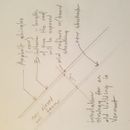Old house roof strategy
I have a project in Vermont where we are not allowed to raise the ridge line at all due to zoning. This is an old church being turned into a residence. Inside there are old trusses that we don’t want to bury. So we have 7″ to insulate. Due to the potential of the roof being exposed for a period of time after the old asbestos shingles are stripped, the builder would like to use ice and water shield over the old boards as the old shingles are stripped until new shingles are added. We would like to use 7″ of closed cell foam (hot roof) to meet code.
Are there any issues with moisture I should be aware of, or any other issues? It is a very large space – 40’x60′ and very tall so areas of intense moisture such as bathrooms or kitchens are less of an issue.
GBA Detail Library
A collection of one thousand construction details organized by climate and house part










Replies
Robert,
The strategy will work, as long as the sheathing boards are dry on the day that the closed-cell spray foam insulation is installed. (Needless to say, you don't want to trap any moisture in the board sheathing.)
Some builders are wary of encapsulating sheathing with an impermeable layer on both sides, but it is done all the time for roofs.
Many roofers prefer to install OSB or plywood sheathing over old board sheathing before installing roofing. But if the old boards are in good shape, that step may not be necessary.
Thanks Martin. I'm also hoping the old frame, once it is exposed and we can see more about what we have to work with in terms of depth, will be conducive to and inch or two of rigid mineral wool, strapping and new sheetrock to cut down a bit on thermal bridging at the rafters.